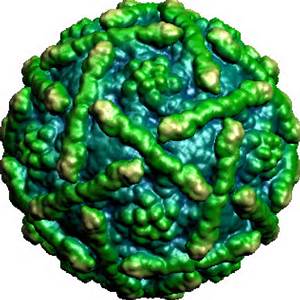Human enterovirus 68 is one of more than a hundred types of non-polio enteroviruses. Non-polio enteroviruses are incredibly common; they infect about 10 to 15 million people in the United States each year. Enterovirus 68 is thought to be less common than other enteroviruses; however, exact infection numbers are not known. A total of 140 people in 16 states were confirmed to be infected with Enterovirus 68 between mid-August and September 17, 2014.
Symptoms of Human Enterovirus 68
Human Enterovirus 68 is associated with causing severe respiratory illness, especially in young children with pre-existing respiratory conditions. The virus initially causes cold-like symptoms, including the following:
- Fever
- Runny Nose
- Sneezing
- Coughing
- Body and Muscle Aches
In serious cases, the virus may progress and cause severe respiratory illness requiring hospitalization, with symptoms such as:
- Difficulty Breathing
- Wheezing
- Loss of Appetite
- Asthma Exacerbation
Who’s at Risk?
Generally, children and teenagers are mostly likely to become infected with enteroviruses. Children with a previous history of asthma and other respiratory illnesses are at especially high risk for Enterovirus 68. It often affects very young children, typically under the age of four. (www.cbc.ca)
Prevention
The Virginia Department of Health (www.vdh.virginia.gov) recommends following these everyday steps to prevent the spread of Human Enterovirus 68 and other respiratory viruses.
- Cover your nose and mouth with a tissue when you cough or sneeze. This will block the spread of droplets from your mouth or nose that could contain germs.
- Wash your hands often with soap and water. If soap and water are not available, use an alcohol-based hand rub.
- Avoid touching your eyes, nose and mouth. Germs spread this way.
- Try to avoid close contact with sick people.
- Disinfect frequently touched surfaces, such as toys and doorknobs, especially if someone is sick.
- If you or your child gets sick with a respiratory illness, limit contact with others as much as possible to help prevent spreading illness. Stay home (or keep your child home) for at least 24 hours after fever is gone except to seek medical care or for other necessities. Fever should be gone without the use of a fever-reducing medicine.
- Take steps to ensure optimal control of asthma in children.
Cleaning for Human Enterovirus 68
The CDC (Center for Disease Control) recommends disinfecting frequently touched surfaces, especially if someone is sick. Surfaces in healthcare settings should be cleaned with a hospital-grade disinfectant with an EPA label claim for any of several non-enveloped viruses (e.g. norovirus, poliovirus, rhinovirus). (www.cdc.gov)
Use cleaning products that contain no asthmagens; controlling asthma and other chronic respiratory conditions is essential in controlling Enterovirus 68.
Best Practices for Healthy Cleaning
- Areas where lots of people pass through should be cleaned more often and with a focus on touch points like door knobs, faucet handles, railings and desktops.
- Remove infection-causing germs from surfaces by cleaning first, then using a low-toxicity disinfectant or sanitizer. This is especially important on critical touch points like door knobs, faucet knobs, touch plates, railings, and desks.
- Always clean touch points with a fresh cleaning rag or paper towel that has not been used in bathrooms or garbage areas.
- Keeping a bottle of low-toxicity cleaner available for employees to clean the desks between each class can do wonders for the cleanliness of a school environment. This is great for office areas, too!
- New technologies keep surfaces safe without harsh chemicals that may contribute to both acute and systemic health consequences. When choosing an EPA-registered sanitizer or disinfectant, go with a low-toxicity option.
- When using a disinfectant or sanitizer, follow the chemical’s directions for dwell time after cleaning the surface.
- Choose readily biodegradable cleaners, sanitizers, and disinfectants.
References and Additional Reading
- “Enterovirus D68: 3 confirmed cases in B.C.’s Lower Mainland”. CBC News. 16 September 2014. Retrieved 17 September 2014.
- “Severe Respiratory Illness Associated with Enterovirus D68 — Missouri and Illinois, 2014″. Morbidity and Mortality Weekly Report (MMWR) (CDC). 63(Early Release): 1–2. September 8, 2014. Retrieved 9 September 2014.
- “Non-Polio Enterovirus” Centers for Disease Control and Prevention. Updated by the CDC Sept 17, 2014. Retrieved 19 September 2014.
- Virginia Department of Health, Commissioner’s Letter to Clinicians, Emerging Update: Enterovirus D68. September 9, 2014. Retrieved 19 September 2014.
- “Enteroviruses.” Medscape. 11 Sept. 2014. Retrieved 19 September 2014.







